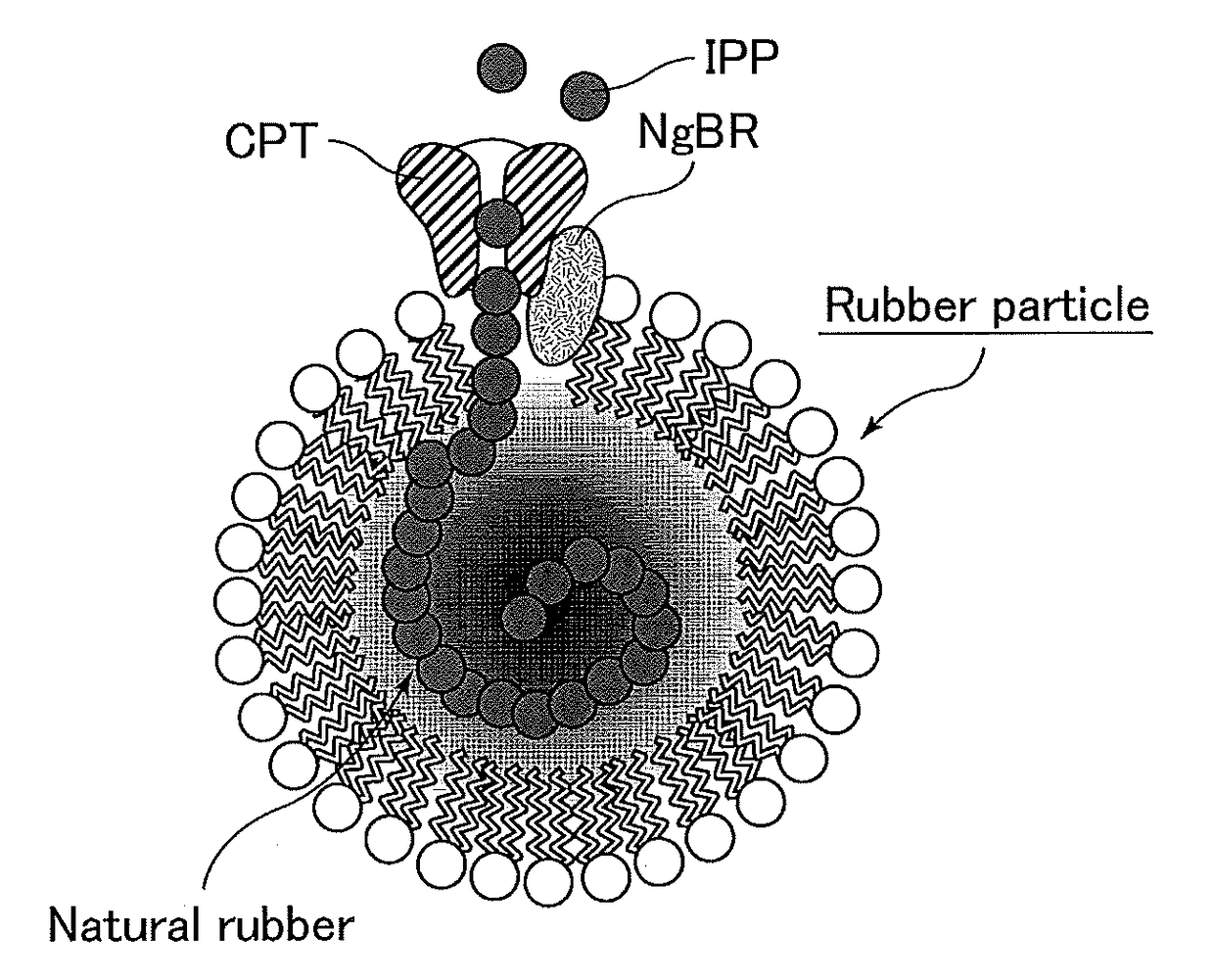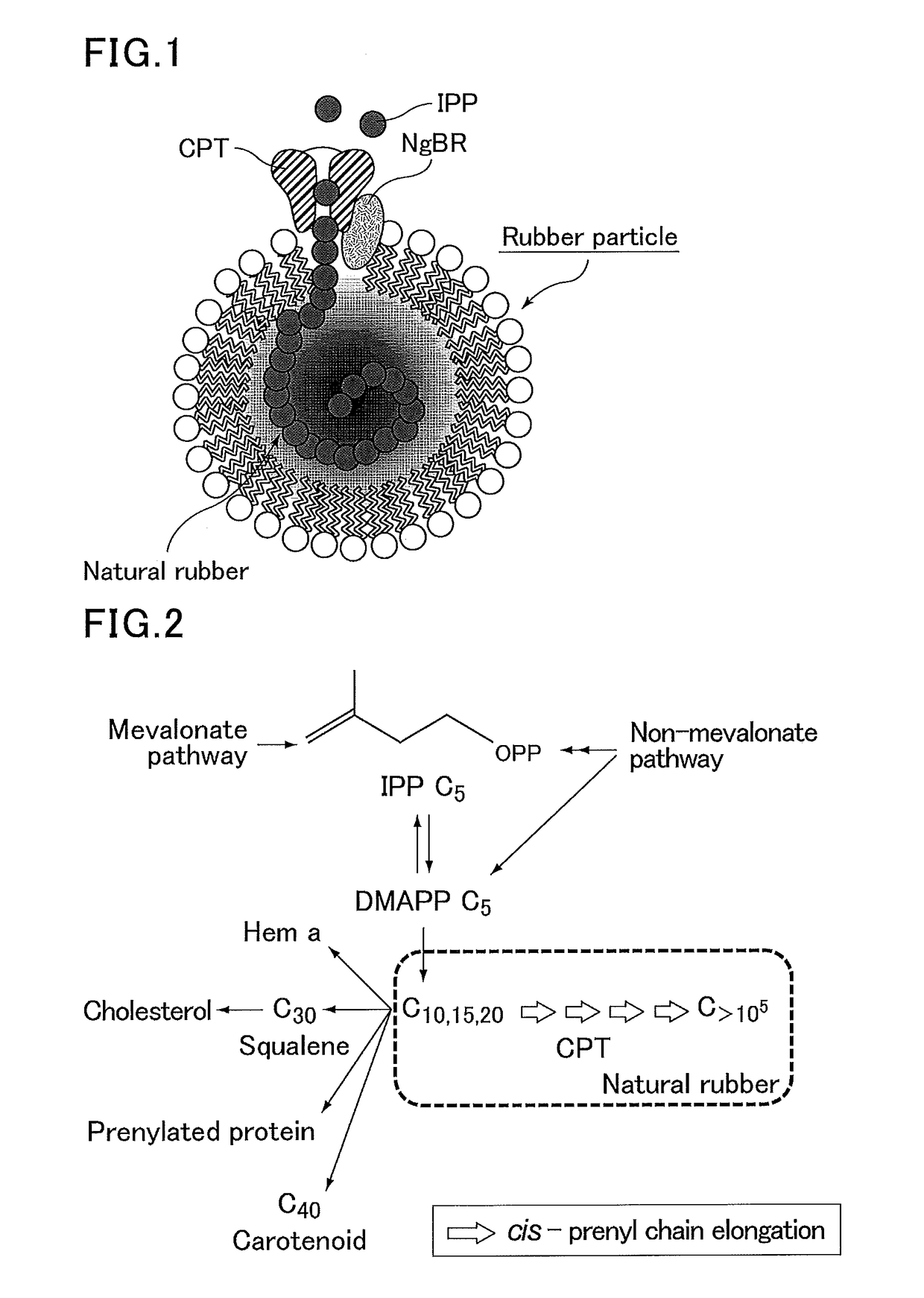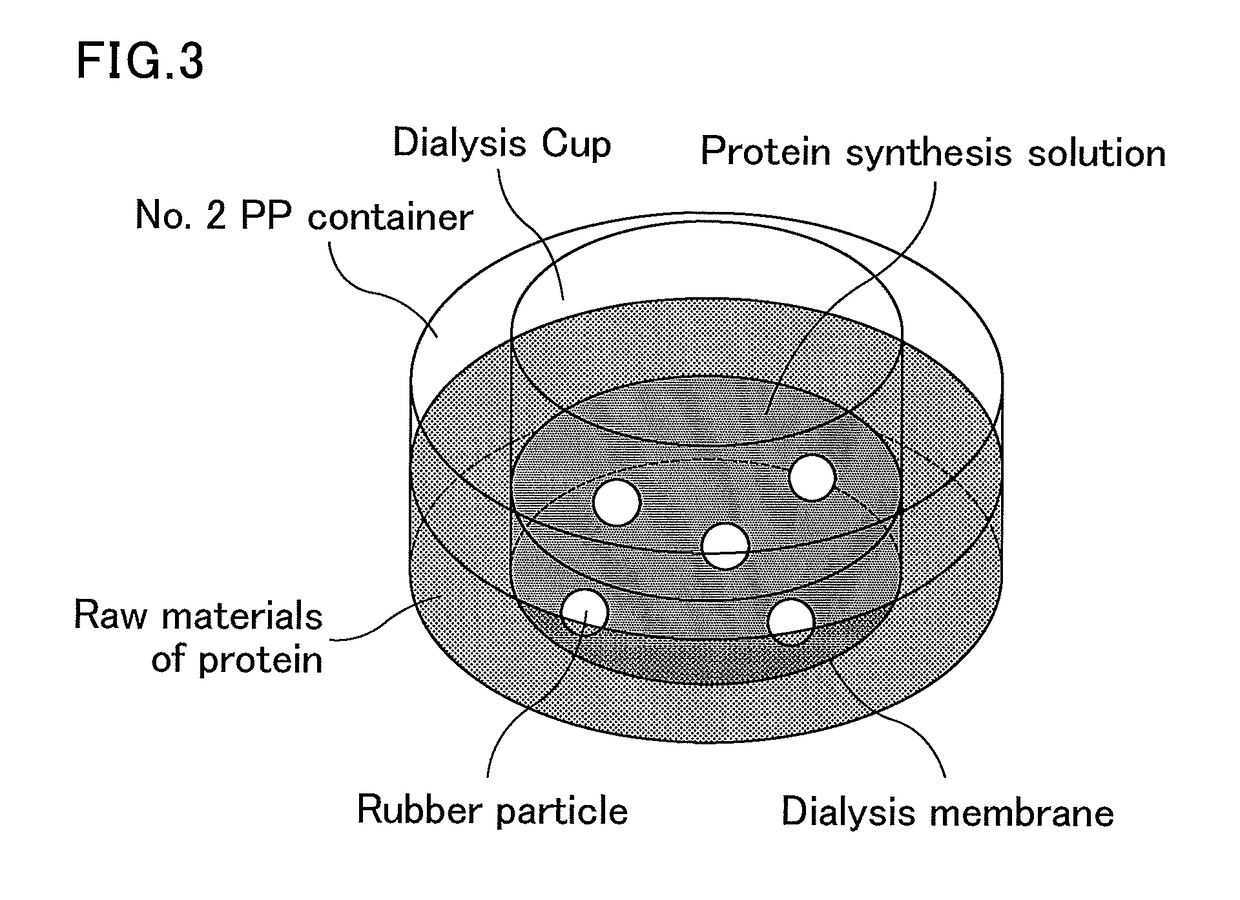Production method for polyisoprenoid, vector, transgenic plant, production method for pneumatic tire, and production method for rubber product
a production method and polyisoprenoid technology, applied in the direction of transferases, peptide sources, transportation and packaging, etc., can solve the problems of insufficient understanding of the association between these proteins and cpt, adverse effects, and difficulty in greatly increasing the natural rubber production of hevea brasiliensis, etc., to achieve more efficient rubber production, increase the activity of the cpt family protein, and increase the activity of the rubber synthesis activity of the rubber particles
- Summary
- Abstract
- Description
- Claims
- Application Information
AI Technical Summary
Benefits of technology
Problems solved by technology
Method used
Image
Examples
example 1
[0359][Extraction of Total RNA from Hevea Latex]
[0360]Total RNA was extracted from the latex of Hevea brasiliensis by the hot phenol method. To 6 mL of the latex were added 6 mL of 100 mM sodium acetate buffer and 1 mL of a 10% SDS solution, and then 12 mL of water-saturated phenol pre-heated at 65° C. The mixture was incubated for five minutes at 65° C., agitated in a vortex mixer, and centrifuged at 7,000 rpm for 10 minutes at room temperature. After the centrifugation, the supernatant was transferred to a new tube, 12 mL of a phenol:chloroform (1:1) solution was added, and the mixture was agitated by shaking for two minutes. After the agitation, the resulting mixture was centrifuged again at 7,000 rpm for 10 minutes at room temperature, the supernatant was transferred to a new tube, 12 mL of a chloroform: isoamyl alcohol (24:1) solution was added, and the mixture was agitated by shaking for two minutes. After the agitation, the resulting mixture was centrifuged again at 7,000 rpm...
example 2
[0395](Synthesis of CPT and NgBR Genes of Lactuca sativa)
[0396]A CPT gene (LsCPT3) and a NgBR gene (LsCPTL2) of Lactuca sativa were produced by synthesizing a region from the start codon to the stop codon using a gene synthesis service of GenScript Japan with public databases via BLAST. For cloning into vectors for cell-free protein synthesis described later, Xho I and Kpn I sites were added to the 5′ and 3′ ends, respectively, of LsCPT3, and EcoRV and Xho I sites were added to the 5′ and 3′ ends, respectively, of LsCPTL2.
[0397]The CPT gene (LsCPT3) and NgBR gene (LsCPTL2) were produced as described above. The genes were sequenced to identify the full-length nucleotide sequence and amino acid sequence. The nucleotide sequence of LsCPT3 is given by SEQ ID NO:13. The amino acid sequence of LsCPT3 is given by SEQ ID NO:14. The nucleotide sequence of LsCPTL2 is given by SEQ ID NO:15. The amino acid sequence of LsCPTL2 is given by SEQ ID NO:16.
[Vector Construction]
[0398]The obtained DNA ...
example 3
[0412][Extraction of Total RNA from Arabidopsis thaliana]
[0413]Total RNA was extracted from Arabidopsis thaliana by the hot phenol method. A seedling frozen with liquid nitrogen was ground in a mortar. Thereto were added 400 μL of water-saturated phenol (80° C.) and 400 μL of a RNA extraction buffer (80° C., 100 mM LiCl, 100 mM Tris-HCl (pH 8.0), 10 mM EDTA, and 1% SDS), followed by vortex for 30 seconds. Thereto was added 400 μL of chloroform / isoamyl alcohol (24:1), followed by vortex for 30 seconds. The mixture was centrifuged at 4° C. and 15,000 rpm for 15 minutes, and the upper phase was collected. The upper phase was mixed with 500 μL of 4M LiCl, and then left at −80° C. for one hour. The mixture was centrifuged at 4° C. and 15,000 rpm for 15 minutes, and the supernatant was removed to obtain a precipitate, which was then dissolved in 400 μL of DEPC-treated water. The solution was mixed with 880 μL of ethanol and 40 μL of 3M NaOAc. The mixture was centrifuged at 4° C. and 15,00...
PUM
| Property | Measurement | Unit |
|---|---|---|
| Concentration | aaaaa | aaaaa |
Abstract
Description
Claims
Application Information
 Login to View More
Login to View More - R&D
- Intellectual Property
- Life Sciences
- Materials
- Tech Scout
- Unparalleled Data Quality
- Higher Quality Content
- 60% Fewer Hallucinations
Browse by: Latest US Patents, China's latest patents, Technical Efficacy Thesaurus, Application Domain, Technology Topic, Popular Technical Reports.
© 2025 PatSnap. All rights reserved.Legal|Privacy policy|Modern Slavery Act Transparency Statement|Sitemap|About US| Contact US: help@patsnap.com



